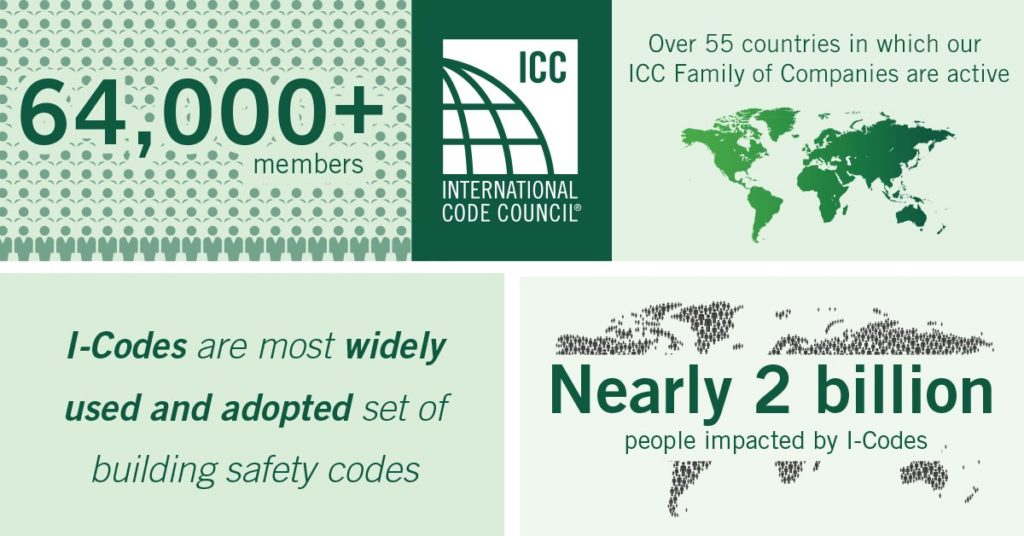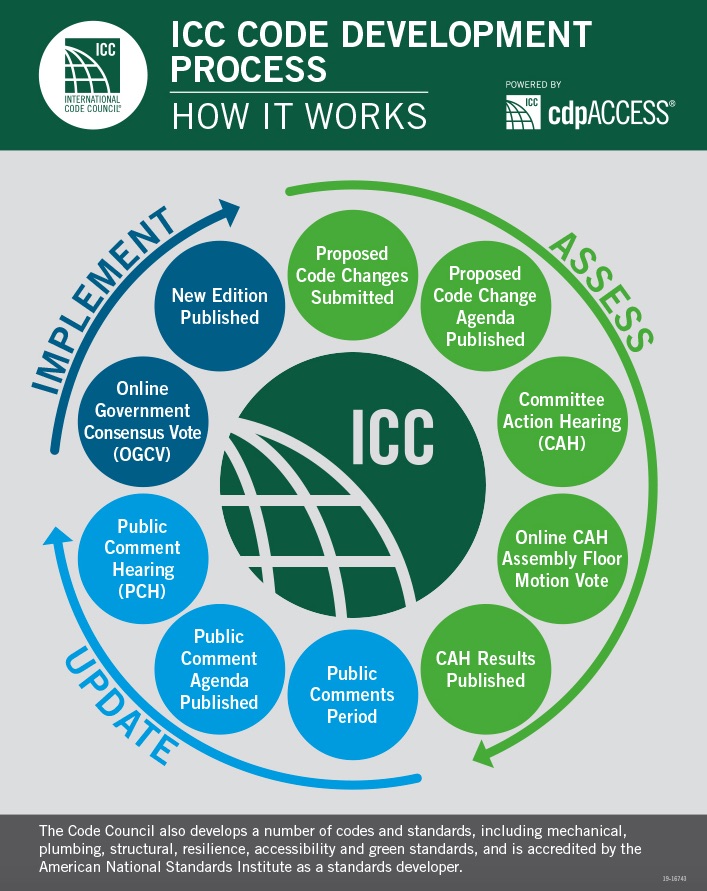ICC Development Process
Goal Of ICC
Appendix Q Tiny House was adopted to the IRC building code standards through the ICC Code Development Process. The goal of the ICC is to utilize a process open to all parties with safeguards to avoid domination by proprietary interests. ICC Governmental Consensus Process achieves this with the final vote resting with those administering, formulating, or enforcing regulations relating to public health, safety, and welfare.
The International Code Council develops construction and public safety codes through a governmental consensus process. This system of code development has provided the highest level of safety in the world for more than 90 years. The ICC governmental consensus process meets the principles defined by the National Standards Strategy of 2000, and the OMB Circular A-119, Federal Participation in the Development and Use of Voluntary Consensus Standards and in Conformity Assessment Activities (1998). It complies with Public Law 104-113 National Technology Transfer and Advancement Act of 1995. The following principles are adhered to in ICC’s governmental consensus process:
- Openness
- Transparency
- Balance of Interest
- Due Process
- Appeals Process
- Consensus
The International Codes
- Are innovative and coordinated.
- Cannot be influenced by vested financial interests.
- Are efficient and effective.
- Are developed through the efforts of public safety officials.
- Are up to date and state of the art.
- Are updated every three years.
- Are economically viable and practical.
The Benefits of Participating in the Code Development Process
Imagine a world where you can shape the regulations that ensure the health, safety, and welfare of the people who live in, work in, and visit the community you serve.
Governmental Consensus Process
The governmental consensus process leaves the final determination of code provisions in the hands of public safety officials who, with no vested financial interest, can legitimately represent the public interest.
ICC Code Development Process
Code Addition Every Three Years
Upcoming Version: 2021 IRC Development
The International Residential Code provisions provide many benefits, among which is the model code development process that offers an international forum for residential construction professionals to discuss prescriptive code requirements. This forum provides an excellent arena to debate proposed revisions.
The International Residential Code has a Big Vision for Tiny Houses February 1st, 2018
Appendix Q Tiny House is the first set of building standards for dwellings ever incorporated into a model code. The story of how the appendix came to be is a great example of how the Code Council works together with stakeholders and industry professionals to develop model code standards for new and innovative technologies as they emerge.
At the hearing, however, one person had testified in “friendly opposition” to the proposal: Martin Hammer, an architect who had co-authored the IRC’s straw-bale construction appendix. Following the hearing, Hammer received a call from his friend Andrew Morrison of TinyHouseBuild.com, a builder and educator who had helped Hammer write the appendix. “Andrew asked if I thought we could submit a different proposal,” Hammer recalled.
Tiny-house advocates across the country reviewed the draft language and donated funds to pay for Hammer’s time as a consultant and to help Morrison and others travel to Kansas City to attend the public hearings. Morrison also received helpful feedback from the International Code Council, which he incorporated into the draft.
Article Source ICC Building Safety Journal



